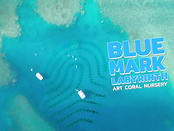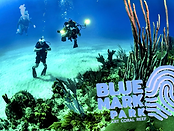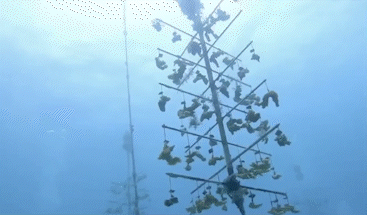TAKE ACTION NOW!




OUR
GRAY MARK
IN THE OCEANS

%2014_28_43.png)
WHY
PROTECT
OUR OCEANS?

%2014_28_52.png)
WHY
PROTECT
THE CORALS?
Because the oceans are essential to life on Earth.
The ocean is the largest ecosystem on Earth, it is the planet’s life support system. Oceans generate half of the oxygen we breathe and, at any given moment, they contain more than 97% of the world’s water. Living oceans absorb carbon dioxide from the atmosphere and reduce climate change impacts.
The diversity and productivity of the world’s oceans is a vital interest for humankind. The battle to save our most diverse ecosystems is entering a critical phase.
Our marine habitats find themselves on the frontlines of the planet's greatest conflict -- one that threatens countless species and the health of future generations -- the fight to avert a climate crisis.
“Our marine habitats find themselves on the frontlines of the planet's greatest conflict—one that threatens countless species and the health of future generations—the fight to avert a climate crisis” (CNN).
HOW DO WE POLLUTE?
-
Garbage, including plastic debris (bags, straws, cutlery, six-pack rings, water bottles, etc.)
-
Sunscreen and other topicals
-
Oil seepage
-
Sewage
-
Agricultural and aquaculture runoff
-
Industrial waste
-
Carbon dioxide
-
Noise
Because the oceans are essential to life on Earth.
The ocean is the largest ecosystem on Earth; it is the Planet’s life-support system.
Oceans generate 50% of our oxygen and contain more than 97% of the world’s water. Living oceans absorb carbon dioxide from the atmosphere and reduce climate change impacts.
Protecting the oceans in this crucial time should be considered highly important, as our lives quite literally depend on it.
The world has lost over half of its coral reefs since 1950 due to climate change, overfishing, and pollution.
Coral bleaching events, which are caused by warmer ocean temperatures, have, over the last 40 years, become five times more likely to occur all over the world.
By 2050, nearly all the world's reefs will be at risk.
(Information provided in part by NOAA and Carbon Brief)
Because you and the future of all those you love depend on healthy oceans, we want a better future for our oceans and the people who depend on them.
THE DYNAMIC
Interactive Art Installation
The "BLUE MARK LABYRINTH by AB" is an underwater art installation used to grow corals. This interactive art installation will house around the small pieces of corals, creating a unique marine labyrinth involving the spectator so everyone can enjoy diving.
The public is welcome to visit this coral nursery online as well as in-person by scuba-diving.


Corals Growing in an Art Installation
During their time in our art installation corals are carefully maintained by regular cleaning and removal of invasive species. Our main goal is to improve genetic diversity and increase numbers of corals, while also creating blue-green jobs in an artwork.
Ecological Coral Art Park
After 9 months to 1 year, when the samples reach the desired size they are removed from the BLUE MARK LABYRINTH and are attached to the BLUE MARK PARK by our experts.
The new reef will be constituted with different species forming a print that will become a park to be visited by the public. Everyone can follow the growth of their coral by using coordinates of Google Maps, Photos, Videos, and visit the BLUE MARK PARK REEF.


New Reef with Ecological Art
BLUE MARK PARK creates homes for sea life as artificial reefs. From tourism to marine recreation, BLUE MARK PARK play an important role in local economies. They’re also essential to the ocean's health, providing habitat for a variety of marine life and increasing coastal resilience to storms. Additionally, BLUE MARK PARK provides an opportunity to educate by creating awareness and encouraging commitment to protect the oceans making it a top diving destination
BLUE MARK REEF ART PARKS reef benefits include:
Habitat: Will provide a home for over 1 million different marine species.
Income: Not only do coral reefs support life, but they also support the economy with a value of roughly $2.7 trillion every year.
Coastal protection: Coral reefs act as natural breakwaters, thereby limiting shoreline erosion and beaches, coastal homes, and farmland. This protection saves roughly $9 billion in damages every year.
Medicine: Coral reefs also provide medicinal benefits, as they have pharmaceutical compounds that can be used to treat human infirmities.
(Information provided by International Year of the Reef [IYOR])


"Sadly, despite how important these beautiful ecosystems are, they are under threat from stressors. Protecting them for future generations will not only mean our children and grandchildren might have the chance to experience the wonder of these underwater ecosystems but that the people, plants, and animals that rely on them will also survive and thrive."
Kevin Gaines
Kevin brings his background in biology and hands-on coral conservation science to the BLUE MARK ART PARK. As a Florida native, he grew up surfing, fishing, snorkeling, and scuba diving the coral reefs of the Florida Keys and the Bahamas. Because of this, he has a thorough understanding of the importance of healthy coral reef ecosystems and their role in the future of our planet. Through his work in aquaculture, he applied land-based coral fragmentation techniques and became the first person in the USA to take a coral fragment from a reef and successfully grow and transplant it back to the reef's second-generation coral colonies. He also co-developed the “Coral Tree Nursery,” which has become the most viable and globally adopted method for coral restoration practitioners to create successful nurseries for coral conservation.
LEAVE YOUR BLUE MARK ON THE OCEAN
DOCUMENTARY
Our film will show the complete process to create a new coral reef and will bring awareness to a wider audience.
By far the best resource for information, inspiration, and entertainment.

MEET THE TEAM
%2019_24_edited-2.jpg)
Kevin Gaines
SCIENCE DIRECTOR
%2019_46_edited.jpg)
DIVERS TEAM
OUR BENEFITS
ECO ART
FOR
AWARENESS
AFE uses art to raise awareness to generate eco-ethical habits, protect our oceans and natural resources, and respect the Planet.
Be part!
CORAL RESTORATION+
CONSERVATION
%2020_22_22.png)
BLUE MARK
LABYRINTH REEF
Our coral nursery will be a touristic attraction and an important component of marine conservation, providing a collection of species that will create the new coral art park.
CORAL REEF
ART PARK
ATTRACTION
%2013_04_51.png)
BLUE MARK REEF ART PARKS
The new reef, created with different species forming a print, becomes an underwater art park to be visited by the public.
MUCH FUN
FOR
EVERYBODY!
%2019_17_12.png)
World Premiere
You can leave your Blue Mark for the Oceans a living legacy for future generations.
Join us!
%2012_55_edited.png)
%2017_edited.png)



%2014_18_edited.jpg)
%2015_09_01.png)
%2010_29_edited.jpg)

%2014_20_26.png)



%2014_29_21.png)









